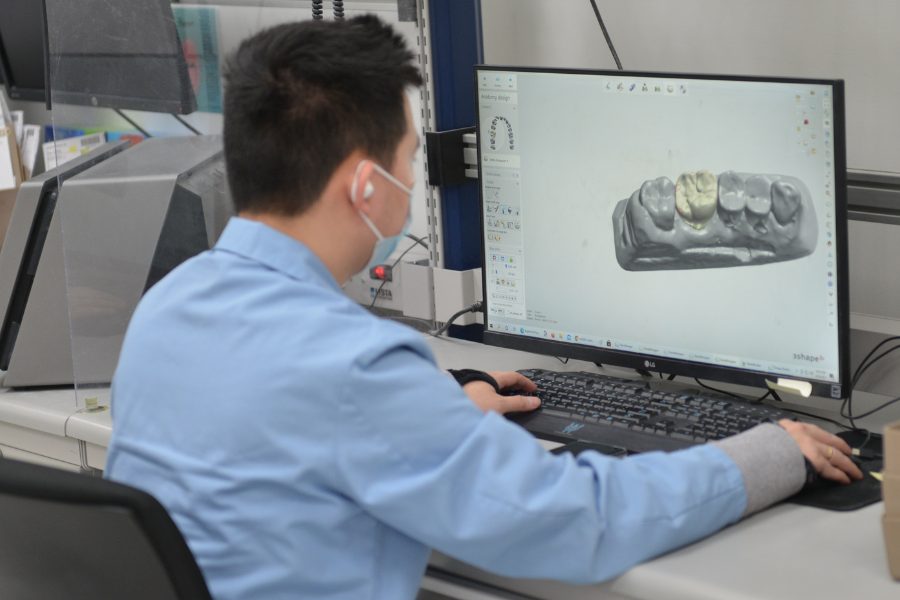Why Dentists Should Rethink CAD/CAM in Dental Practices
In the evolving landscape of dentistry, technological advancements have ushered in a new era of innovation, promising increased efficiency and precision in patient care. Among these innovations, CAD/CAM dentistry (Computer-Aided Design and Computer-Aided Manufacturing) technology stands out, offering dentists the tantalizing prospect of in-house production of dental restorations.
The allure is undeniable: the thought of creating custom restorations in our own practices sounds appealing. It promises autonomy, cost-effectiveness, and the ability to swiftly cater to our patients’ needs. But, as we delve deeper, a crucial question arises: Is handling CAD/CAM really the best approach for dental practitioners?

Drawbacks and Challenges of CAD/CAM Dentistry
While the idea of producing dental restorations in-house using CAD/CAM technology may seem enticing, the reality often presents significant challenges for dental practitioners. One of the most pressing issues is the lack of specialized expertise in CAD/CAM operations within dental practices.
Precision and quality are paramount in dental restorations. However, without the dedicated training and experience that dental laboratory technicians possess, the products generated in-house may fall short in terms of accuracy and quality. Despite our best intentions, the craftsmanship required for intricate restorations may be compromised due to this lack of specialized knowledge.
Moreover, the allure of cost-effectiveness might be deceiving. While there’s an initial appeal in reducing external expenses by handling CAD/CAM internally, the long-term repercussions of subpar restorations can be financially burdensome. Patients may require additional visits and interventions to rectify issues stemming from poorly fabricated restorations, ultimately negating any perceived cost savings.
Additionally, the time invested in learning and managing CAD/CAM dentistry systems within practices can divert our attention from our primary focus: providing optimal patient care. Balancing the demands of operating and maintaining CAD/CAM technology alongside our clinical responsibilities can be overwhelming and, in turn, affect the quality and efficiency of our patient interactions.
Invest In A Dental Laboratory That Can Produce Consistent High Quality Restorations
Amidst the allure of in-house CAD/CAM production, it’s crucial to reconsider our approach to dental restorations and explore alternative pathways that prioritize both quality outcomes and patient-centered care.
One such alternative lies in leveraging the expertise of specialized dental laboratories. These laboratories are equipped with skilled technicians proficient in CAD/CAM technology. Entrusting them with the task of fabricating dental restorations ensures meticulous attention to detail, precision in design, and high-quality materials—elements crucial for durable and aesthetically pleasing restorations.
Collaborating with dental laboratories offers multifaceted advantages. It allows us, as dental professionals, to focus our expertise on patient-centric care—listening attentively to our patients’ concerns, providing tailored treatment plans, and delivering exceptional service. This collaboration not only ensures superior-quality restorations but also fosters a smoother patient experience, enhancing trust and satisfaction.
Moreover, by entrusting CAD/CAM procedures to specialized technicians, we mitigate the risk of suboptimal restorations. This proactive approach not only minimizes the likelihood of corrective interventions but also contributes to long-term cost savings by reducing the need for extensive revisions or replacements.
Rethinking the role of CAD/CAM dentistry in our practices necessitates a shift in perspective. Instead of perceiving it as a cost-saving measure or an avenue for total autonomy, viewing it as a collaborative tool with dental laboratories may pave the way for elevated standards of patient care and superior treatment outcomes.



Leave a Reply
Want to join the discussion?Feel free to contribute!